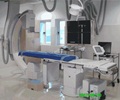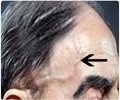A new technique, which could eventually be used to identify patients with suspected coronary artery disease, has been discovered.

Atherosclerosis in the coronary arteries is associated with a risk of future heart disease, and it is therefore important to find risk markers for atherosclerotic disease.
"When the heart beats, the body's blood vessels increase in diameter, and there is also movement alongside the blood vessels, known as longitudinal displacement, or tLod," researcher Sara Svedlund from the Department of Molecular and Clinical Medicine at the Sahlgrenska Academy, explained.
"It was not previously possible to tell whether this movement had any impact on health, as there was a lack of adequate measurement techniques," she said.
In her thesis, Svedlund investigated whether ultrasound technique could be used to study tLoD in the blood vessels in the neck. This would provide a simple and painless method of identifying patients at increased risk of coronary artery disease.
She used an advanced imaging analysis technique to study movement in the carotid artery using standard clinical ultrasound images. The method was tested on around 500 people, both patients with suspected coronary artery disease and healthy volunteers.
Advertisement
Patients with reduced longitudinal displacement along the carotid artery have more extensive atherosclerosis in that artery, impaired heart function and a greater tendency to suffer from a shortage of oxygen in the heart.
Advertisement
"Today's methods look only at the thickness of the artery walls when identifying atherosclerosis," she said.
"Our technique shows that longitudinal displacement in the carotid artery reflects both the degree of atherosclerosis in the artery and heart function.
"This new method may therefore give us additional information and enable us to predict which patients run an increased risk of future heart disease.
"We will follow up these interesting findings in further studies to establish the technique which potentially can be used in clinical routine in the future," she added.
Source-ANI












